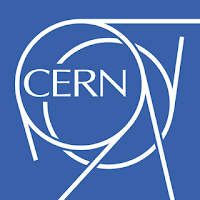CERN - European Organization for Nuclear Research logo.
May 4, 2012
Image above: The Proton Synchrotron Booster in October 1972, just four months after being switched on for the first time (Image: CERN).
The Proton Synchrotron (PS) Booster – a key accelerator in the CERN complex – is 40 years old this month.
The accelerator is made up of four superimposed synchrotron rings that receive beams of protons from the linear accelerator (Linac) at 50 MeV and accelerate them to 800 MeV for injection into the Proton Synchrotron (PS).
CERN Accelerator Complex
Before the Booster received its first beams on 26 May 1972, protons were injected directly from the Linac into the PS, where they were accelerated to 26 GeV. The low injection energy of 50 MeV limited the number of protons the PS could accept. The Booster allows the PS to accept an order of magnitude more protons, which greatly enhances the beam's utility for experiments.
Note:
1. CERN, the European Organization for Nuclear Research, is the world's leading laboratory for particle physics. It has its headquarters in Geneva. At present, its Member States are Austria, Belgium, Bulgaria, the Czech Republic, Denmark, Finland, France, Germany, Greece, Hungary, Italy, the Netherlands, Norway, Poland, Portugal, Slovakia, Spain, Sweden, Switzerland and the United Kingdom. Romania is a candidate for accession. Israel is an Associate Member in the pre-stage to Membership. India, Japan, the Russian Federation, the United States of America, Turkey, the European Commission and UNESCO have Observer status.
Find out more - CERN Bulletin: http://cdsweb.cern.ch/journal/CERNBulletin/2012/18/News%20Articles/1442604?ln=en
Images, Text, Credit: CERN.
Greetings, Orbiter.ch



